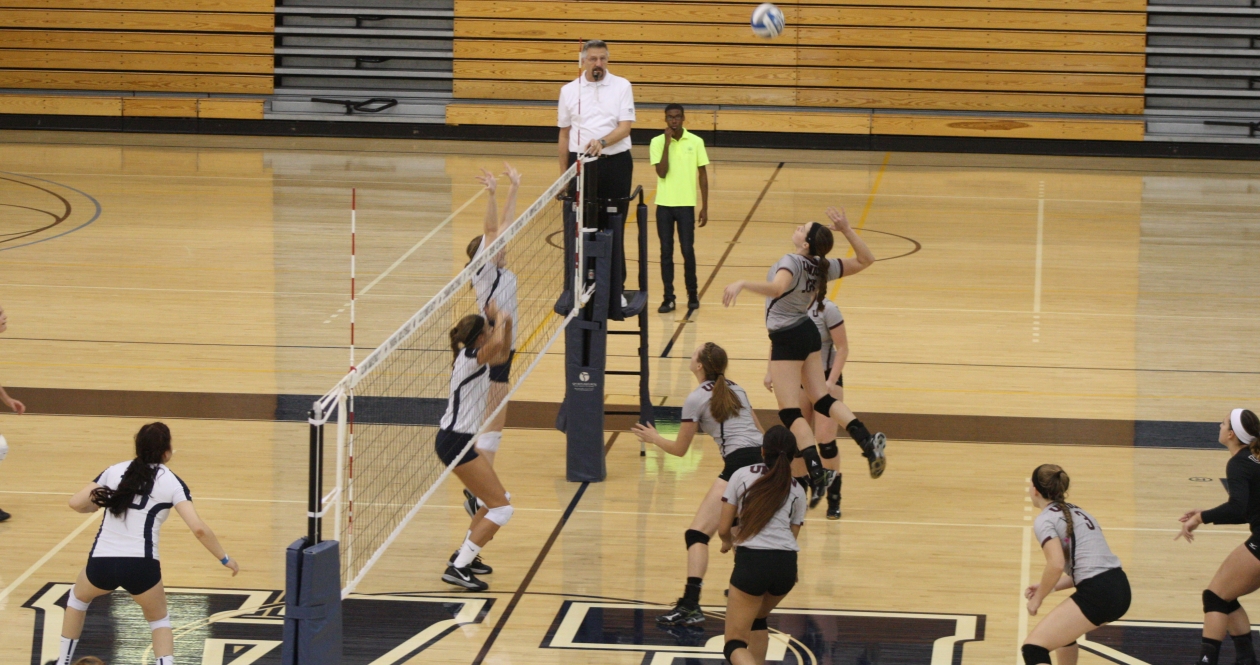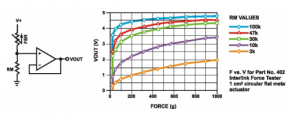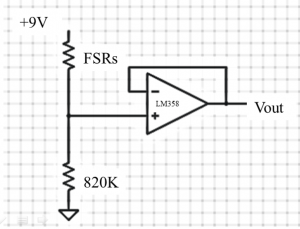Week one of winter term consisted of finalizing the circuitry of my system as well as preliminary power calculations.
To finalize my circuit I needed to decide if I was going to put my force sensitive resistors (FSR’s) in parallel or in series as well as choosing the right voltage divider resisitor. Since each two foot sensing section has 3 FSR’s, I can either put all three in parallel or all three in series. Two decide I have to look at different scenarios. Looking at the image below, the output voltage increases with increasing force.
The value of Rm, the resistor on the bottom of the circuit, is chosen to maximize the desired force sensitivity range and to limit current. Therefore, I chose my Rm value to be 820K. This is a very high resistance because I want my system to be very sensitive in order to replicate a digital pulse for the Arduino to read in. Looking at parallel vs. series for the FSR’s, if one FSR is hit, resistance will have more of a change in parallel than in series. Therefore it is more accurate to have them is parallel. All FSR’s are hit, overall resistance in lower in parallel and series so there is less of a drastic difference here. Therefore, looking at the final circuit below, I will have the 3 FSR’s in parallel and and 820K voltage divider in order to replicate a digital signal for my Arduino.
Now looking at power. One of my specifications is to have the in and out line monitoring system last a whole day volleyball tournament (it is usually a maximum of 10 hours). To calculate what type of battery I needed, I found the current draw for the Arduino, LED, opamp quiescent current, and force sensitive resistors. Using the equation:
Battery Capacity (mAH)/current draw(mA)= number of hours
My battery capacity came out to be 540.35 mAH, meaning a 9V lithium ion battery will work for this system. The 9V lithion ion battery has a battery capacity of 620 mAH.


